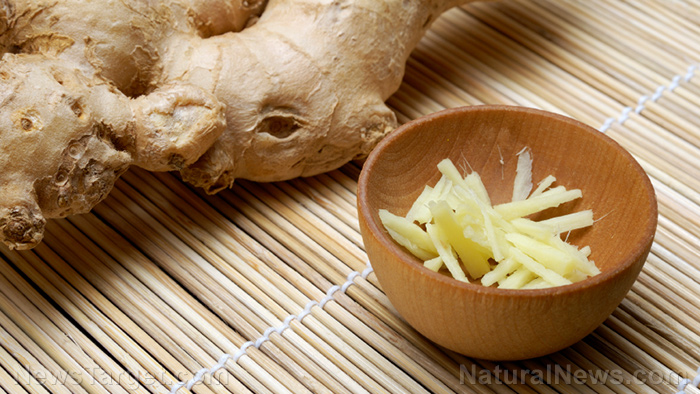You are what you eat: 3 foods that look eerily similar to the organs they heal
07/16/2020 / By Virgilio Marin

Mysterious recurring patterns rule the universe. Natural foods and organs of the human body, for example, share these patterns and are said to be connected: Foods can, in some way, heal the organ it resembles.
In ancient times, people used this idea and developed natural medicine to treat diseases. Herbs and other organics were their sources of life and healing. This is not the case anymore, as people have become reliant on modern medicine and big pharmaceuticals.
Yet these three foods, eerily similar to the organs that studies show they heal, demonstrate how beneficial – and connected – organic food is to human health.
Walnuts
Walnuts are round, single-seeded nuts that look just like the brain. They share the same veiny texture, shape and composition and are both grooved in the middle.
Multiple studies have shown that walnuts are good for the brain. The nuts are packed with omega-3 fatty acids, including alpha-linolenic acid (ALA), which play a role in improving brain function. Interestingly, walnuts are the only nuts that have a significant amount of ALA. (Related: Add this to your diet if you’re diabetic: The English walnut prevents neuropathy.)
People with depression and age-related cognitive decline may also benefit from walnuts. In a study published in the Journal of Alzheimer’s Disease, researchers fed mice with Alzheimer’s disease walnuts every day for 10 months. They found that the mice significantly improved their memory and learning skills. Similarly, tests on older rats also found that feeding them with walnuts for eight weeks reversed age-related brain dysfunction.
In another study, researchers sampled 64 young, healthy adults with an 8-week diet regimen consisting of walnuts. They found that the participants displayed improved comprehension. These effects, experts say, are due to the nuts’ high antioxidant content and omega-3 fatty acids.
Moreover, neuroprotective compounds such as vitamin E isomers, melatonin, folate, and polyphenols are also present in walnuts.
Pomegranate
Known as a symbol of fertility, pomegranates resemble the human ovaries. The fruits help produce hormones such as estrone and testosterone while showing promise in treating menopause and preventing problems during pregnancy. A study from Washington University of Medicine in St. Louis found that the juice reduced stress in human placental cells in vitro.
Pomegranates also look like the epithelial tissue, which is found in several parts of the body, including the mouth, throat and blood vessels. Drinking pomegranate juice can freshen your mouth with the fruit’s healthy astringent effect. Furthermore, it contains antioxidants that can clear clogged arteries and potentially mitigate atherosclerosis.
Flaxseed
Flaxseed, too, looks like the epithelial tissue. And much like the epithelium, it is sticky and viscous.
Historically, people used flaxseed to heal the skin, fight fatigue and reduce inflammation. That’s because it has high amounts of lignans, compounds found in plants that serve as a powerful antioxidant. Nowadays, flaxseed can take the form of an oil which can be applied to the skin and improve wound-healing.
Moreover, studies suggest that flaxseed can help in lowering the risk of several diseases, such as:
- Obesity
- Bowel disease
- Diabetes
- Kidney disease
- Cancers and tumors
- Cardiovascular disease
An animal study found that it can slow tumor growth in mice that are given 0.3 millimeters of flaxseed oil for 40 days. Similarly, another study found it blocked the formation of colon cancer in rats.
The striking resemblance between food and the human body shows how connected everything is in the natural world. More importantly, it may hold the key to curing diseases that have confounded and killed many.
Learn more about superfoods and the organs they target at Superfoods.news.
Sources include:
Tagged Under: anti-diabetes, anti-obesity, atherosclerosis, brain health, cancer, cognitive health, fightobesity, flaxseed, food cures, food is medicine, functional food, heart health, pomegranate, pregnancy, walnut
RECENT NEWS & ARTICLES
COPYRIGHT © 2017 FOOD SCIENCE NEWS




















